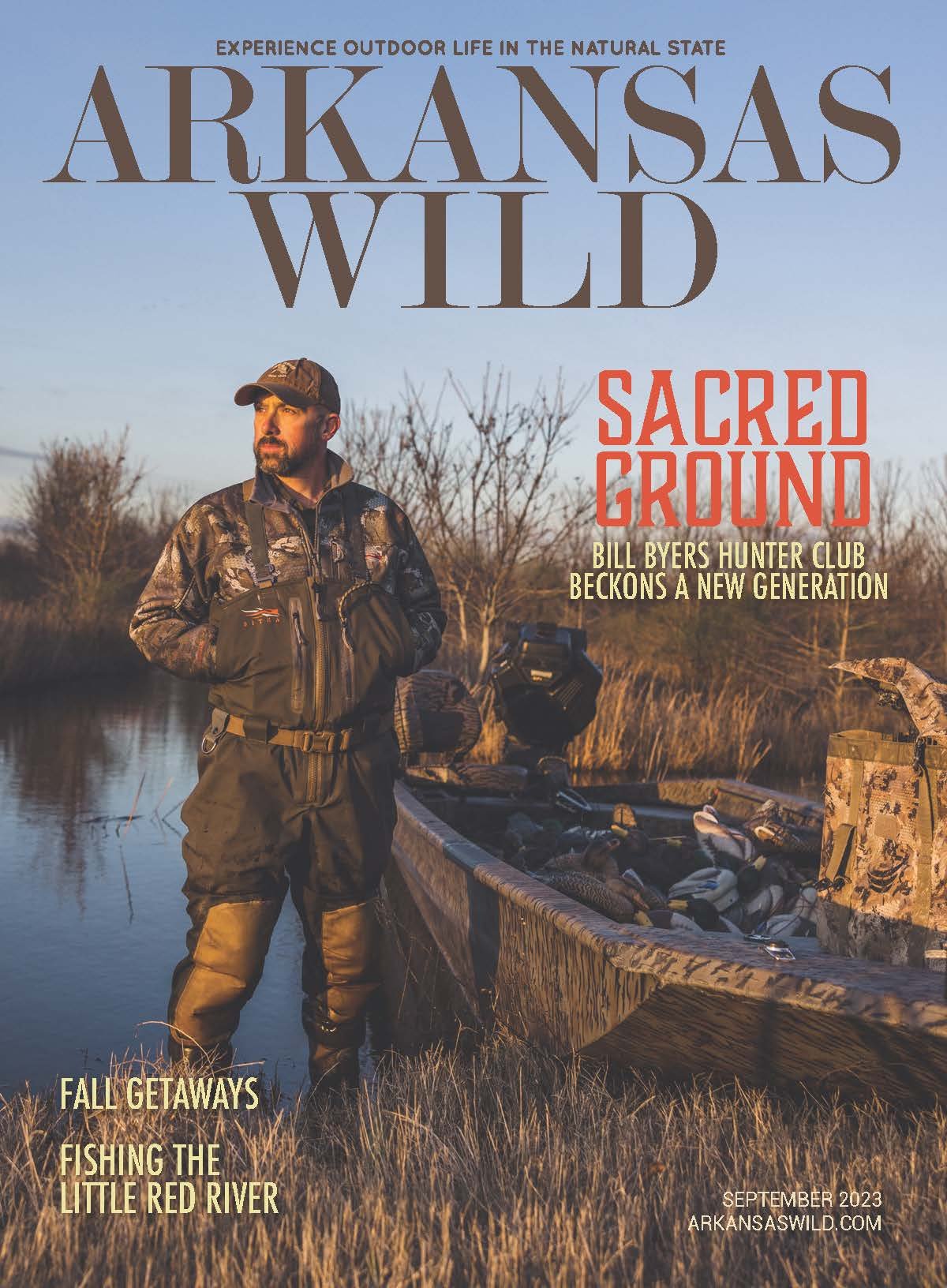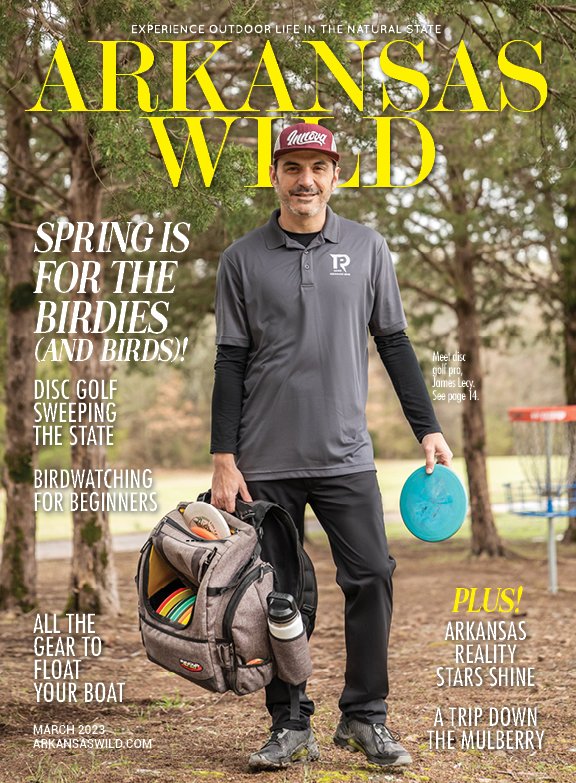It was a Friday afternoon in late September and I was contortioned into a Little Rock-bound airline seat next to a friendly but chatty middle-aged lady from Wisconsin.
This fellow business traveler–some sort of traveling nurse by occupation–just couldn't hide her surprise when the conversation revealed I was anxious to get home to Drew County to alligator hunt later that same night.
Immediately she began talking about how much she liked the semi-reality show ìSwamp People,î going so far as to loudly provide her own thickly Midwestern accented impression of Troy's famous line: "Choote 'em, Lizabett! Choote 'em!"
Over the years, I have encountered similar reactions even from native Arkansans. To learn that we have large pockets of wild alligators spread across southern Arkansas is surprising information for many folks, even for some who share the same latitudes with these giant reptiles. More often than not shows like "Swamp People" are the only exposure they've had to alligator hunting. But gator hunting in the Natural State is a very different prospect from the depictions found on Louisianaís most popular television export.
Putrid bait suspended via hook and line from trees and giant treble hooks used for blind-snagging gators underwater makes for great TV but you won't find these things on an Arkansas hunt. Nor will you find any rifles on board for long distance shots or pistols brandished for those dramatic slow-motion final dispatches.
Arkansas gator hunters have no such luxuries. By necessity, the process of hunting alligators in Arkansas is a highly regulated activity. While alligators are found in fair numbers here, they tend to be concentrated in very small areas. When alligator hunting became a legal sport in Arkansas for the first time in 2007, the Arkansas Game and Fish Commission (AGFC) wisely developed a lottery style permit drawing system that would provide as many opportunities as the resource could safely sustain.
Currently about 70 tags per year are drawn from a pool of 3,000 applicants. Applicants must designate private or public land choice and tags are awarded based on specific geographic zones to be hunted. The season is a total of six nights long over two weekendsóhunters can hunt on the third and fourth Friday, Saturday and Sunday nights of September each year.
It all starts with a tag drawing in June, and successful recipients must then attend "Alligator School" in late August about one month prior to the hunt. This mandatory three-hour class conducted by the AGFC educates neophyte gator hunters on technique as well as a long litany of rules governing the hunt.
Limitations on the method and type of equipment allowed make it extremely restrictive. For starters, Arkansas' hunt is completely at night. Hunting begins 30 minutes after sunset and tag holders can have up to three registered ìhelpersî with them. Alligators must be ìcaughtî by one of two methods: a snare or harpoon tip, both of which are connected to a rope. An eight-foot pole is employed to slip the wire snare over the gator's head or in the case of harpooning, to drive a special arrowhead into its neck.
The snare is exactly what it sounds like: a stainless steel wire hoop with a one-way sliding lock. The "harpoon" however isn't from Nantucket and isn't thrown like a spear. It features an oversized bow-fishing style arrowhead that rides on a steel point affixed to the end of the aforementioned pole. Once deployed, it slips off the end, leaving only the barbed tip and a short steel leader attached to a rope.
Alligators harvested have to be at least four-feet-long, and baiting or snagging is not allowed. Hunters cannot use bows or arrows and only shotgun shells of #4 shot or smaller can be used for the kill. (There is no buckshot or any long-range shots in this game.) Shotguns have to remain unloaded and in a case until the actual moment needed to kill the gator.
If it sounds like it would be difficult and dangerous to get close enough to do this to a submerged animal 13-feet-long that has spent the last 65 million years evolving to eat things as large as human beings, well, you would be correct. Keep in mind all this is done from a boat, at night, in the middle of some of the most densely vegetated waters in the country.
Gators can be hard to spot. Only about 10 percent of their body is above the surface while swimming and they tend to hang around areas choked with things like lily pads and cypress knees.
Adam Rutledge of Fayetteville with his 2013 season 6-foot 3-inch gator (killed while hunting with McClendon).
Paul Beard (L) with a 4-foot 9-inch gator and Mark Meadors (R) with an 8-foot 2-inch alligator they killed on the same night while hunting (with McClendon) during the 2014 season.
(L to R) Anthony Brown, John McClendon, and John Starling in 2011 with an 8-foot 6-inch female alligator killed by Starling on opening night of the 2011 season.
(McClendon’s brother-in-law) Tom Wingard, with his 9 foot 11 inch alligator taken in 2012.
Mark Meadors of Little Rock with an 8’2” alligator taken (while hunting with the McClendon) in 2014.
When they are out in open clear water they usually aren't just loafing around. They are excellent swimmers that can disappear in an instant; the larger they are the more vigilant they tend to be.
The key is to look for red eyes. The glowing ember of a gator's eye illuminated by spotlight is unmistakable in color and reflection. Frogs' eyes shine green; snakes' eyes (and a million other swamp things) shine in varying degrees of white. But gators are always satiny redóa devilish beacon at the waterline burning through the pitch.
Once a gator is spotted, getting close enough to reach him with a snare or harpoon is frustratingly difficult. The important thing to understand is that this is a very close proximity sport. Hunters have to get just mere feet away from the business end of an alligator with either method, and it takes a lot practice and patience to get that close.
Once a gator is successfully connected to the line the adrenaline really starts flowing. I am not a biologist, but pound for pound an alligator has got to be one of the strongest animals alive. Gators head for deep water as soon as they are touched, and from there it is similar to hand-lining a huge fish; albeit a fish that is mostly teeth, tail and all muscle. The head has to be above the water and within a foot or two for an effective shot.
An alligator breaking the surface at the end of a rope is the moment one realizes why they have spent so many boring, mosquito-inundated hours in a dark swamp. Gators go berserk when being hauled up against their will. They spin and spin and spin while thrashing wildly, snapping their jaws in utter defiance of everything around them. Inevitably their tail pounds the boat like a wrecking ball and more than one has actually bitten my boat, clamping the gunnels like a huge pair of toothy vice grips.
Did I mention they spin?
This all happens pretty fast but can seem like hours for a hunter with an aggressive alligator on the line. At some point the tag-holder passes the off the rope to a helper, freeing him to uncase and load up the shotgun. The ideal shot is placed in the apricot-sized region on top of the gator's head where the spinal column meets the brain.
Unfortunately these descriptions greatly understate the process. There is a lot that can (and does) go wrong: Harpoon tips fall out, snares refuse to close, lines tangle, things are knocked overboard and ropes get severed by the kill shot. Feet slip, hands slip and sometimes nerves slip. The list is long and often comical. Every Arkansas gator hunter can recount circumstances so unimaginable they sound beyond belief.
But finding, securing and shooting these reptiles is merely half the battle. Once the shotgun hammer falls, the clock begins ticking: alligators must be temporarily tagged, inspected by an AGFC official, and then permanently tagged (a second tag) within hours of the kill. Equally urgent is the need to cool the carcass quickly to preserve the hide and meat.
The AGFC guys donít get much sleep. With such a compressed season, hunters are out every legal minute until filling their tag. There is no way to predict when or where the next inspection will be required, so multiple calls can mean a lot of ground to cover for AGFC personnel. Only after the permanent tag is in place can skinning begin, an activity not for the weak in strength or of stomach, especially at 3 a.m.
But despite these challenges, Arkansas alligator hunters are surprisingly successful. By comparing the number of tags issued to the number of gators killed each season, a rough average of the eight seasons conducted so far reveals that Arkansas hunters enjoy a solid 64-percent success rate overall. This is remarkable considering that Arkansas doesn't have a legacy of hunting alligators (a person has to be a permanent state resident to be awarded a tag and the season only began in 2007, so the majority likely didn't have experienced mentors or any background involving gator hunting); and due to the lottery system, nearly every hunter participating each season is a first time alligator hunter.
That says volumes regarding Arkansans' outdoor skills. Despite arguably the most restrictive regulations anywhere (including the absence of any hooks or bait) and very limited experience, Arkansas has become a serious alligator state.
And even a good ol' boy from Louisiana named Troy can appreciate that.











